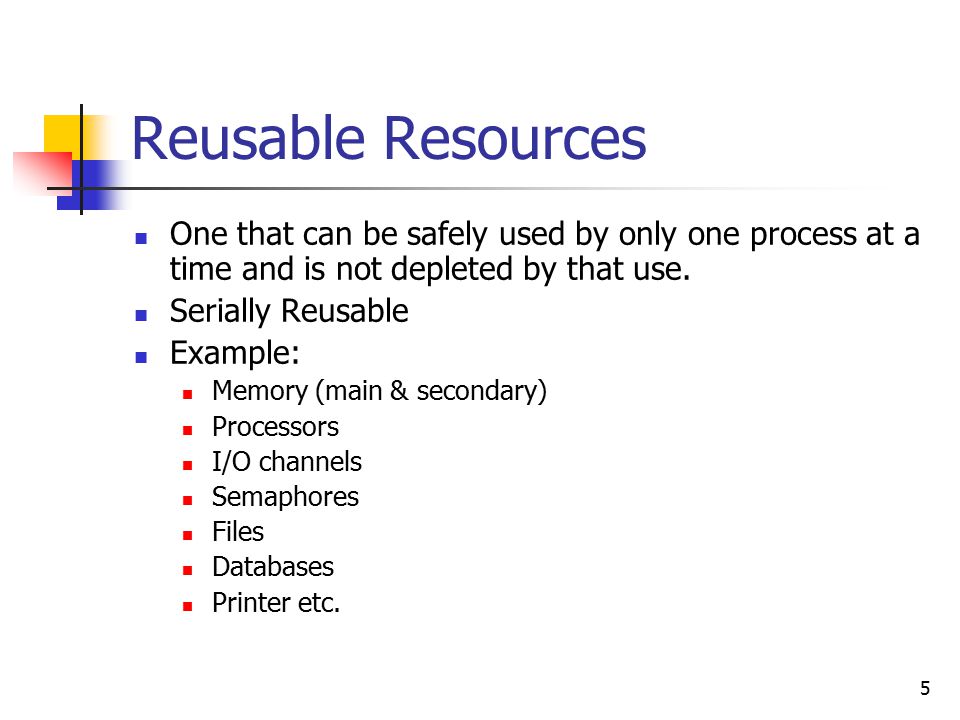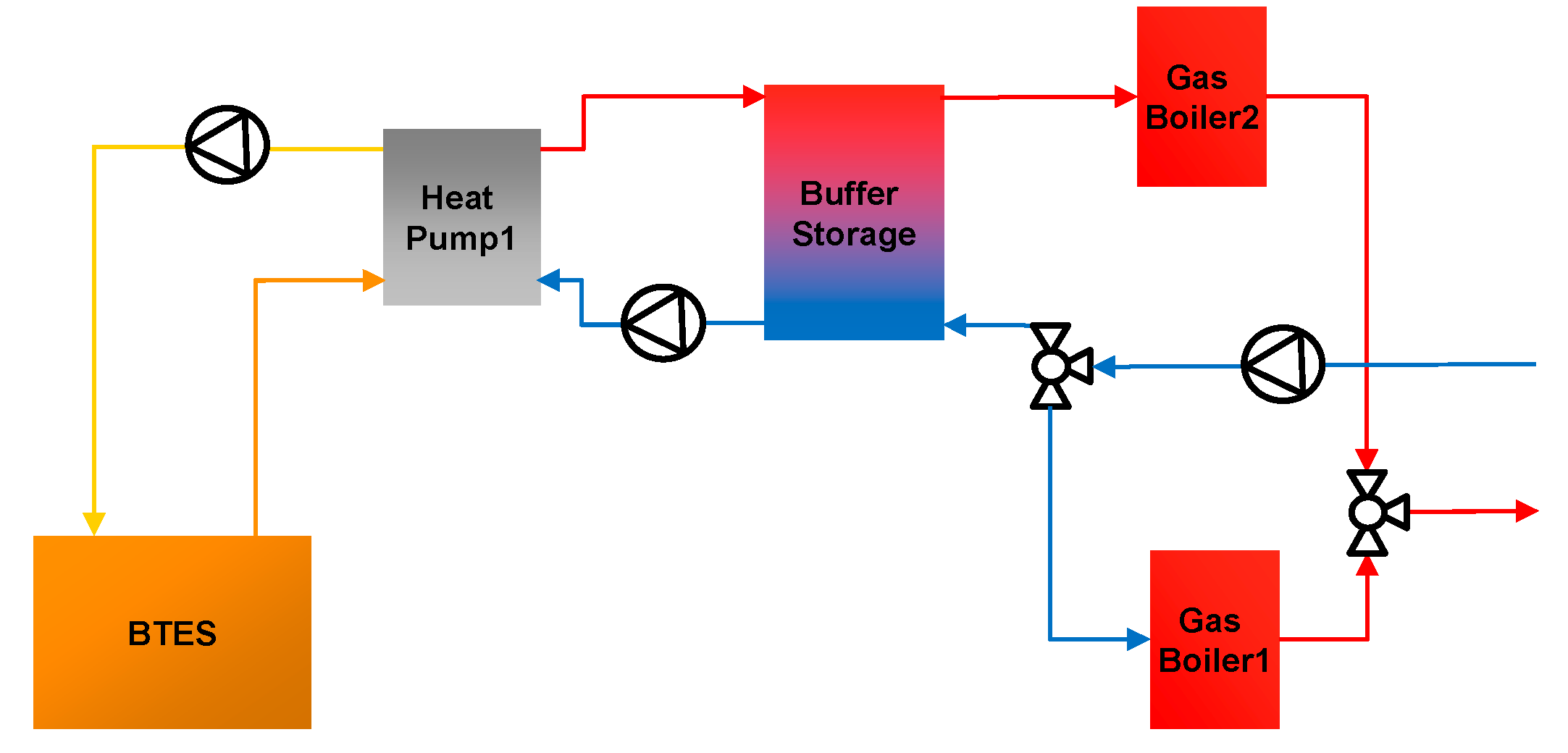- Start studying 125 Chapter 1: Operating System. Learn vocabulary, terms, and more with flashcards, games, and other study tools.
- Sep 18, 2015 Reusable resources The resources that can be reused again. Examples include Processors, I/O channels, main and secondary memory, files, databases, and semaphores.
Learn Reusable Resource definition in operating system with explanation to study “What is Reusable Resource”. Study reusable resource explanation with operating system terms to review operating system course for online degree programs.
Reusable Resource Definition
A resource that can be safely used by only one process at a time and is not depleted by that use.
Operating Systems by William Stallings
Global Resource Serialization (GRS) is the component within the IBM z/OS operating system responsible for enabling fair access to serially reusable computing resources, such as datasets and tape drives or virtual resources, such as lists, queues, and control blocks.
Reusable Resource Explanation
A reusable resource is a resource that is not rendered useless by being used. For instance, a magnetic disk such as hard drive or solid state drive is a reusable resource as it is not wasted if you use it once.
Keep Learning Operating System Explanations
What is Word?
A word is a unit of data of a defined bit length that can be addressed and moved between storage ...
What is Cache Memory?

Cache memory also known as the CPU memory is a volatile very high-speed Static Random Access Memory (SRAM) that a ...
What is Field?

A field is an area in fixed or known location in a unit of data like a record, message header ...
What is Thread?
A thread is a single sequence within a process. Thread have some of the properties of processes, that is why ...
What is First In First Out (FIFO)?
FIFO (First In First Out) is a method for organizing and manipulating data, where the oldest entry i.e. first entry, ...
What is Process State?
Process state is the information provided to the operating system in order for it to manage the processes according to ...
Global Resource Serialization (GRS) is the component within the IBMz/OS operating system responsible for enabling fair access to serially reusable computing resources, such as datasets and tape drives or virtual resources, such as lists, queues, and control blocks. Programs can request exclusive access to a resource (which means that program and all subsequent requesting programs are blocked until that program is given access to the resource), usually requested when a program needs to update the resource or shared access (which means that multiple programs can be given access to the resource), usually requested when a program only needs to query the state of the resource. GRS manages all requests in FIFO (first in/first out) order.[1]
Scoping[edit]
What Is Reusable Resources In Os

GRS manages resources at three different levels of scoping:
- STEP - this level is for resources that exist within a single MVS address space. Only threads (tasks) within that address space can request access to the resource.
- SYSTEM - this level is for resources that exist within a single MVS instance. Any thread running on the system can request access to the resource.
- SYSTEMS - also known as GLOBAL, these resources are accessible by multiple MVS instances. Any thread running on a system in the GRS complex can request access to the resource.

Clustering[edit]
In order for GRS to serialize resources between multiple systems, the systems must be clustered. There are several options to enable this clustering:
Serially Reusable Resources In Operating System Pdf

- GRS Ring - each of the systems (LPARs) are connected with channel-to-channel adapters (CTCAs) in a ring configuration. The GRS software sends messages around the ring to ensure the integrity of the complex and to arbitrate correct succession of ownership.
- Basic Sysplex - each of the systems in the sysplex has complete connectivity to every other system via CTCAs or ESCON CTCAs, managed by the XCF (Cross System Coupling Facility) component. The GRS component utilizes the Messaging and Group Services provided by XCF to replace and augment the function through the GRS managed CTCAs.
- GRS Star (Parallel Sysplex) - Rather than using a message passing protocol to manage resource ownership succession, GRS uses the locking services provided by the XES (Cross System Extended Services) component of MVS. Use of locking services requires a lock structure (called ISGLOCK) to be created in a Coupling Facility (CF).
Serially Reusable Resources In Operating System Diagram
Similar[edit]
CA, Inc. licenses a product called 'Multi-Image Manager' (CA-MIM) which contains a component called 'Multi-Image Integrity' (MII) which can be used to implement similar functions to GRS.
References[edit]
- ^IBM Knowledge Center: https://www.ibm.com/support/knowledgecenter/SSLTBW_2.1.0/com.ibm.zos.v2r1.ieae200/ieae200294.htm